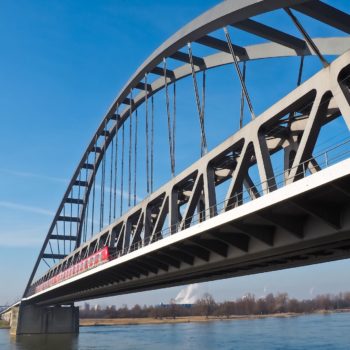Bridging the Demand/Supply Gap in Programmatic
by Lindsay Rowntree on 7th Mar 2018 in News

In association with Scroller Ads
When looking for results, programmatic advertisers must work closer to their supply partners as they have a level of control that, probably, they don’t know is available for their digital strategies, writes Julian Saconi (pictured below), sales director, Scroller Ads.
Programmatic is a complex space. Savvy marketers are actively looking for the latest technologies to plug into their delivery stack. The right DSP, good data partners, verification, and measurement add-ons. Accessing and scaling inventory to the target audience always requires patience and dedication. Nevertheless, there is a whole dimension untapped for this kind of marketer.
Supply-side managers have the challenging job of giving the right value to their inventory. Categorising its audiences, cleaning the traffic, and working with each DSP to assure connections that maximise delivery.
These two sides of the programmatic space have similar day jobs. But incredibly it is very rare to see that they know what each other does. It is not unusual to see a conversation between them, where they ask each other to see what they see on their platforms.

Julian Saconi, Sales Director, Scroller Ads
Take a video campaign as an example. An ad op needs to deliver a campaign for an auto company. She needs to reach the planned impressions volume, achieve the minimum viewability accepted rate, protect the campaign quality, and assure that a significant number of people watched the complete ad. Many programmatic buyers will start by setting an open market campaign using the typical targeting tools, others will setup a PMP deal with one or many supply partners and will run the campaign.
In this typical scenario, there is something common that happens on every campaign around the world: the demand ad op is buying and filtering from the inventory that is visible to them, and the supply ad op is, or simply checking how many impressions the advertiser is bidding, or trying to increase the fill rate by optimising the pipes of the PMP Deal. The problem is, it is unlikely that both will be talking during the campaign.
'Full Circle Optimization' is the process of working in sync, both supply and demand programmatic ad ops, for the common goal of reaching the campaign goals. The process begins with the supply side picking and filtering the impressions that are more valuable for the advertiser. Not all the impressions, as commonly happens, to be later filtered by the DSP with their own filtering and targeting tools, but a fraction of the inventory, targeted and cleaned based on the supply side available data. This, of course, starts with a private deal between both parts.
![]() When the DSP engine starts seeing impressions available for bidding, they will be pre-filtered and more relevant. The biggest outcome of this process is that the demand-side platform will be required to consume fewer resources to reach the needed impressions, and by doing this, the number of requests will be higher, and the success rate will be too.
When the DSP engine starts seeing impressions available for bidding, they will be pre-filtered and more relevant. The biggest outcome of this process is that the demand-side platform will be required to consume fewer resources to reach the needed impressions, and by doing this, the number of requests will be higher, and the success rate will be too.
Since we implemented Full Circle Optimization with our demand partners at Scroller Ads, success rate on targeted KPIs grew 20% compared with those campaigns where the buyer was running solo. This is a sign that, although the first benefit of programmatic advertising is the speed of a connected ecosystem, the joint execution between parties is the biggest opportunity of it.
Julian Saconi, Scroller Ads Sales Director, will be speaking at ATS Miami, on March 8.








Follow ExchangeWire